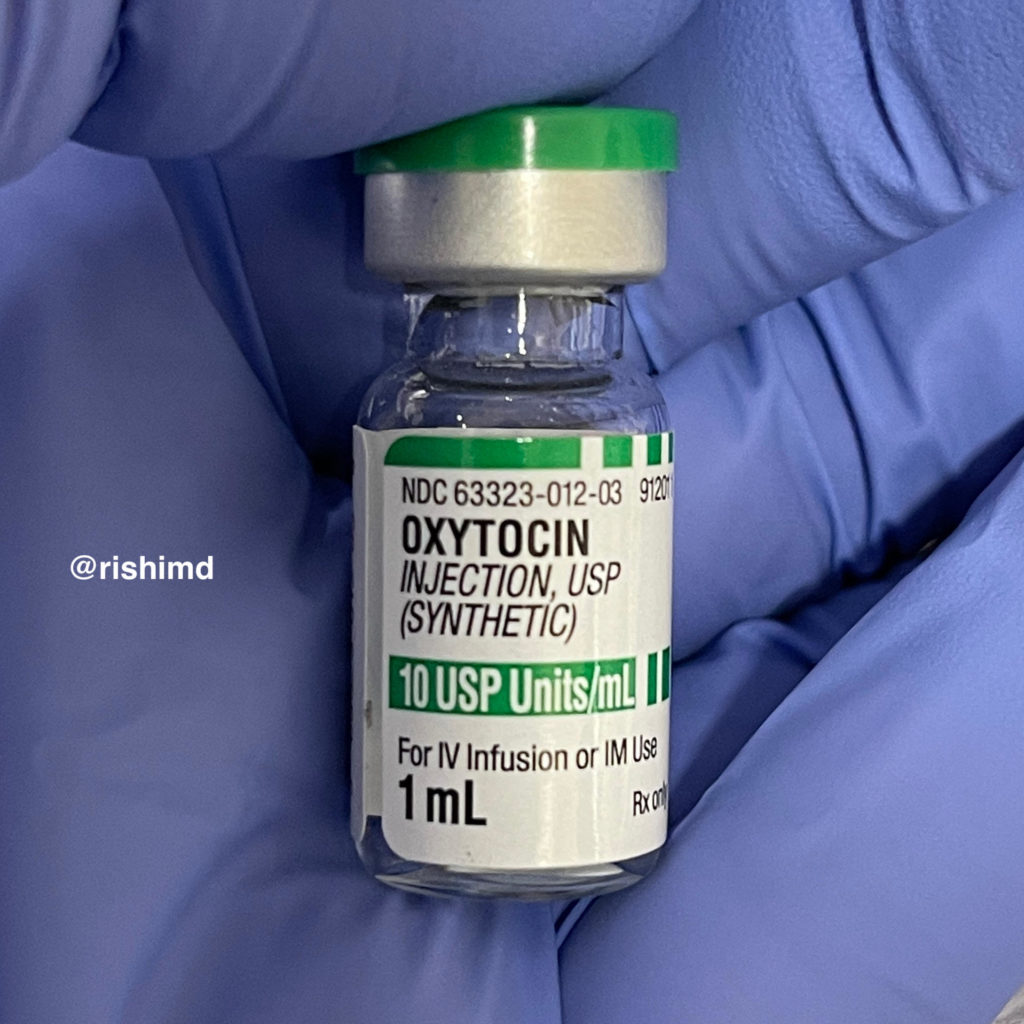Oxytocin (Pitocin) is a neuropeptide hormone synthesized in the hypothalamus and stored in the posterior pituitary gland. Its biological function spans everything from “milk letdown” in lactation and uterine contraction during the latter stages of labor to enhancing trust/attachment between individuals and a role in sexual arousal.
Interestingly, oxytocin creates a positive feedback loop – release of this hormone stimulates the release of even more. This is apparent during labor, where contractions stimulate more oxytocin to be released, creating more intense and frequent contractions. Additionally, nipple stimulation during breastfeeding increases oxytocin release, which causes more milk to be let down.
Postpartum hemorrhage is a leading cause of maternal morbidity and mortality and most often caused by uterine atony. As a resident, I remember oxytocin being used not only for augmentation of labor (AoL) but as a first-line agent postpartum to promote better uterine tone. However, sometimes, oxytocin was not enough since it’s less effective in women who received it for intrapartum AoL due to decreased oxytocin receptors. In these situations, I’d use IM Methergine or Hemabate.






